Location location
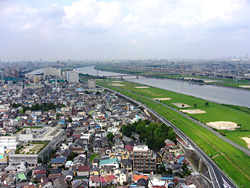 Located in the northeastern part of the 23 wards of Tokyo, it is divided into a Senju area sandwiched between the Sumida River and the Arakawa River and a district north of the Arakawa north of the area. In the Edo era (1603 - 1867), the Senju district prospered as a town of the Nikko Highway, a town that is currently the largest terminal station in the city, Kita - Senju Station, which is a commercial area.
Located in the northeastern part of the 23 wards of Tokyo, it is divided into a Senju area sandwiched between the Sumida River and the Arakawa River and a district north of the Arakawa north of the area. In the Edo era (1603 - 1867), the Senju district prospered as a town of the Nikko Highway, a town that is currently the largest terminal station in the city, Kita - Senju Station, which is a commercial area.
Area
The total area in Adachi-ku is 53.20 square kilometers, which is about 9% of Tokyo's 23 wards. This is the third size after Ota Ward, Setagaya Ward.The characteristic is that there are few highlands like hills in the ward. Entire level is flat, the embankment of Arakawa made by artificial place even at the highest place, is only about 10 m in height. The northwestern part is somewhat higher, and it goes down moderately as it goes to the southeastern part.
Population population
Adachi-ku has a population of 661,610 (as of April 1, 2009).There are 72 elementary schools, 37 middle schools and 11 high schools in the district.
In Adachi-ku there are the symbol mark of the ward and the emblem of the ward, various meanings and hope are included.
Symbol of the ward symbol mark

Adachi-ku symbol mark
The symbol mark of Adachi-
- Challenging (challenge),
- Harmony (harmony),
- Human (human nature)
In harmony of cities, nature, and humans, ADACHI expresses a leap to the future with water and green color.
Crest of the ward coast

Crest of Adachi-ku
It was enacted in public offering in November 1953.
It has become a design of letters of "Adachi".
Nature nature
In Adachi-ku, it is hot and humid because the warm moist monsoon flows in from the Pacific side in the summer and the cold dry seasonal wind blew through from the continent to the ocean side in the winter, contrary to the summer, so it dries coldly It has a temperate humid climate, the difference in temperature is intense and changes in the four seasons appear particularly clearly.
There are a lot of numerous spots that you can easily feel in touch with in the area, and you can fully enjoy the seasonal nature. Here, we will introduce the park centering on beautiful flowers that color the city.
"Urban agricultural park"
Spring flower · cherry tree, tulip
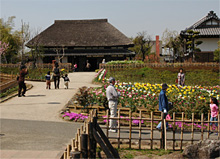
Among the many attractive flower places, the one recommended for spring is "city agricultural park". In the garden there are about 300 cherry blossoms, and in the large flower bed in the Arakawa riverbed, colorful tulips bloom in bloom.
"Shoumu swamp park"
Summer flower · Hana shio
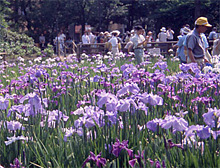
The summer in which the bright sun is lit and green is lively.
In the early summer shiitake field, about 6,500 shares of Hanashaubu centered around the Edo family are in full bloom and entertain the visitors' eyes.
"Flower field memorial garden - Sakura-tei"
Autumn flower · maple, zelkova
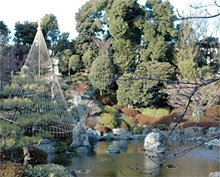
In the garden filled with Japanese emotions, if you finish your ears, you can hear the watering sound of the waterfall, red and yellow in autumn and various colors will dye the Flower Field Memorial Park.
By the time autumn leaves tell the end, the black pine in the garden will celebrate the winter 'snow hanging'.
You can also have a tea ceremony at Ooka-tei, which overlooks the garden.
"Otida Park"
Winter flower · plum
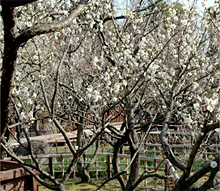
In February the plums of Otanida Park will be on hand. Approximately 120 plums of about 170 plums in the park are planted in the plum garden.
In this plum garden there are Shou (Azuma), tree roads, and you can relax and enjoy the plum blossoms.




